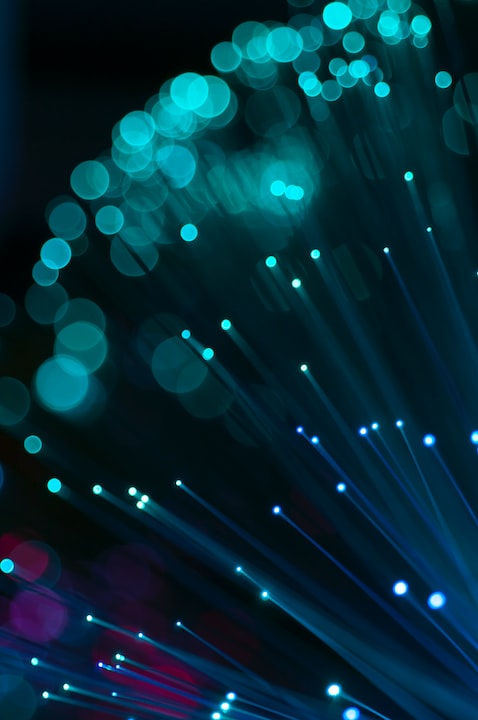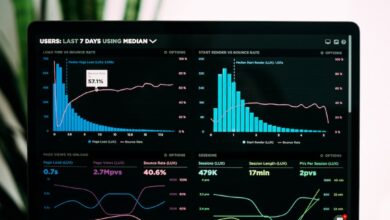When the digital currency market is in full swing, it is not bad to be familiar with its technologies. Web 3.0, also known as the third generation Internet, is one of these technologies that many projects have been developed for its growth. In this article, Web 3.0 will be examined, and we will explain what this term is and what role it will play in human life.
So be sure to follow this fascinating article to the end. It should be noted that this article is not a suggestion for investing in this area. If you are a fan of digital currencies, we suggest you read the article “What is FOMO? deadly fear of financial markets” to avoid your possible losses in this market.
Web3 (also known as Web 3.0 and sometimes stylized as web3) is an idea for a new iteration of the World Wide Web based on blockchain technology, which incorporate concepts such as decentralization and token-based economics. Some technologists and journalists have contrasted it with Web 2.0, wherein they say data and content are centralized in a small group of companies sometimes referred to as “Big Tech“. The term “Web3” was coined in 2014 by Ethereum co-founder Gavin Wood, and the idea gained interest in 2021 from cryptocurrency enthusiasts, large technology companies, and venture capital firms.
https://en.wikipedia.org/wiki/Web3
What is Web 3.0, and what does it do?
The dominance of the tech giants over the Internet and personal data has led the world to seek a new Internet. A decentralized Internet is available to everyone, but no one has control. The third generation of the Internet, also known as Web 3.0, includes open-source, blockchain-based technology that can be used safely. Of course, this phenomenon is still in its infancy and has to go a long way to grow and spread.
With the development of the Internet, our lifestyle has also changed and affected various aspects. For example, buying goods, studying, entertaining, and communicating with others is now possible in new ways. There is a lot of data about us on the Internet that has a positive and negative side. The good news is that when you search the internet, you get offers that are based on your taste, or you see ads that match your personality.
The downside is that a large portion of the revenue goes to just a few large companies. The Internet comprises different content, and the share of people who produce this content is limited. For this reason, the need for a new Internet or Web 3.0 is felt more than before. In this Internet, intermediaries are eliminated, and the person who produces content on the Internet will have income and control over the content.
Large amounts of data and revenue are now available to large companies such as Google, Amazon, Netflix, and the like. In addition to generating revenue, this has given them a lot of data with its opponents.
History of the Internet
The first generation of the Internet is known as Web 1.0 and covers 1989 to 2005. The first generation is also known as the static web; Because it was not interactive, and only a limited number of people could produce content. Also, the number of websites was limited, and Internet access seemed like a unique advantage. Another problem with Web 1.0 was that it was challenging to find the needed data, and there was no specific search algorithm.
The second generation, which began in 2005 and continues to this day, has made an enormous difference. In the second generation, we saw the advent of social media and messaging, and the Internet became more interactive. Users could put content on Wikipedia, YouTube, and the like, so we saw a move forward. Much of this development came from programming languages such as Java and HTML.
The third generation of the Internet or Web 3.0 is still under development, and we have not achieved it. This Internet is also known as the Semantic Web, in which machine learning (ML) technology and artificial intelligence play a unique role. Computer devices and systems on Web 3.0 can think and analyze like humans.
Everything is decentralized on Web 3.0, and no institution can restrict your access to services. With so much data on Web 3.0, the Internet itself will analyze, and its possibilities will be much greater than before. With the third generation of the Internet, you can access everything you need without intermediaries, and there is no other intermediary cost. For example, if you are looking to use certain services, you can easily access them, and you do not need to pay for different sites or platforms for a commission.
Web 3.0 and The relationship between Cryptocurrencies
The third generation of the Internet is closely related to blockchain technology and digital currencies due to its decentralization. Currently, Smart Contract and Defi technologies are examples of Web 3.0. Many projects in the world of digital currencies focus on Web 3.0 and its applications. In the following, many of these projects are introduced along with their users. Please note that we have no investment advice on these projects, and our sole purpose is to familiarize you with the functions of Web 3.0.
Filecoin project
This platform is used for file storage. People who do not have enough space to store their files can use this network. Other people provide storage space, and in return, they receive Filecoin currency as a reward. This project is an example of Web 3.0 applications.
Livepeer project
This project aims to provide a large, decentralized platform for video sharing and playback. This project is built on the Atrium network platform, and if successful, it will cause many changes in the method of using video. Many see the project as a competitor to Instagram or TikTok.
Chainlink project
This project is a kind of oracle. The purpose of oracles is to collect data from the real world or other networks for a specific blockchain. In this way, the interaction between different digital currency projects increases and becomes more practical with data entry from the real world. Oracle projects play a significant role in Web 3.0 and its functions.
Helium project
The Internet of Things (IoT) is one of the essential technologies in the years to come, and thus connecting it to Web 3.0 is a great success. This project focuses on both IoT and wireless communication. Imagine all the devices and objects around us having access to the Internet. In this case, our lives will change in general.
This article explained that Web 3.0 is a new Internet generation capable of understanding and intelligence. With the advent of big technology like Web 3.0, people’s lifestyles will change significantly. What do you think about this? Is Web 3.0 a new revolution on the Internet?










